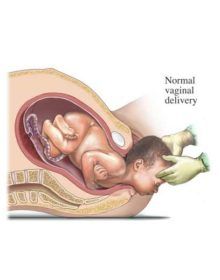Service 服务项目
Services服务项目
Menorrhagia ( Heavy Period ) / 月經過多
Menorrhagia is an abnormally heavy and prolonged menstrual period at regular intervals. Causes may be due to abnormal blood clotting, disruption of normal hormonal regulation of periods or disorders of the endometrial lining of the uterus. Depending upon the cause, it may be associated with abnormally painful periods (dysmenorrhea).
首先需要釐清一個問題 ─ 月經多少算多?正常的月經出血量應為20~60毫升,超過80毫升即為月經過多。若以衛生棉的用量來大約估計,正常的用量大約是平均一天更換4~5次,每個月經週期大致使用20片。如果使用了3包衛生棉還不夠,並且差不多每片衛生棉都是溼透的,就是屬於月經過多。不同年齡層的女性,因生理階段的不同,發生經量過多的原因也各有不同。一般說來,異常的月經過多與以下因素有關:(1) 子宮肌瘤;(2) 子宮內膜過厚;(3) 子宮內膜異位;(4) 子宮內膜息肉;(5) 子宮頸癌或子宮內膜癌等。
首先需要釐清一個問題 ─ 月經多少算多?正常的月經出血量應為20~60毫升,超過80毫升即為月經過多。若以衛生棉的用量來大約估計,正常的用量大約是平均一天更換4~5次,每個月經週期大致使用20片。如果使用了3包衛生棉還不夠,並且差不多每片衛生棉都是溼透的,就是屬於月經過多。不同年齡層的女性,因生理階段的不同,發生經量過多的原因也各有不同。一般說來,異常的月經過多與以下因素有關:(1) 子宮肌瘤;(2) 子宮內膜過厚;(3) 子宮內膜異位;(4) 子宮內膜息肉;(5) 子宮頸癌或子宮內膜癌等。
Epidural Anesthesia / 無痛分娩
The term epidural is often short for epidural analgesia, a form of regional analgesia involving injection of drugs through a catheter placed into the epidural space. The injection can cause both a loss of sensation (anaesthesia) and a loss of pain (analgesia), by blocking the transmission of signals through nerves in or near the spinal cord. The epidural space is the space inside the bony spinal canal but outside the membrane called the dura mater (sometimes called the "dura"). In contact with the inner surface of the dura is another membrane called the arachnoid mater ("arachnoid"). The arachnoid encompasses the cerebrospinal fluid that surrounds the spinal cord.
硬脊膜外麻醉是局部麻醉的一種。透過導管,將藥物注射在硬脊膜外間隙。注射藥物阻隔附近脊髓神經傳送訊息,從而可以使到失去感覺(麻醉),或只達至失去痛楚(止痛)。 人體的「硬脊膜外間隙」是脊椎的一剖份。硬脊膜外間隙位置在骨質的椎管內,硬脊膜以外 。硬脊膜內為蛛網膜。蛛網膜包著腦脊液,腦脊液圍繞著脊髓。 脊椎麻醉是另一種不同的局部麻醉方法,將麻醉藥直接注射到腦脊液。這方法與硬脊膜外麻醉有相類似之處,二者不相同,但亦有時會同用。 硬脊膜外止痛是分娩時常用的止痛方法。在自然分娩過程中使用的硬脊膜外止痛的用藥,一般只會消除痛楚,但不足以令肌肉力量減少;亦不足以用作施行手術。
硬脊膜外麻醉是局部麻醉的一種。透過導管,將藥物注射在硬脊膜外間隙。注射藥物阻隔附近脊髓神經傳送訊息,從而可以使到失去感覺(麻醉),或只達至失去痛楚(止痛)。 人體的「硬脊膜外間隙」是脊椎的一剖份。硬脊膜外間隙位置在骨質的椎管內,硬脊膜以外 。硬脊膜內為蛛網膜。蛛網膜包著腦脊液,腦脊液圍繞著脊髓。 脊椎麻醉是另一種不同的局部麻醉方法,將麻醉藥直接注射到腦脊液。這方法與硬脊膜外麻醉有相類似之處,二者不相同,但亦有時會同用。 硬脊膜外止痛是分娩時常用的止痛方法。在自然分娩過程中使用的硬脊膜外止痛的用藥,一般只會消除痛楚,但不足以令肌肉力量減少;亦不足以用作施行手術。
Circumcision / 包皮環切
Male circumcision is the surgical removal of some or all of the foreskin (prepuce) from the penis.Estimates by the World Health Organization (WHO) suggest that 30 percent of males worldwide are circumcised, of whom 68 percent are Muslim. The prevalence of circumcision varies mostly with religious affiliation, and sometimes culture. In some countries circumcisions are more commonly performed during infancy. Circumcision is also used therapeutically, as one of the treatment options for balanitis xerotica obliterans, phimosis, balanitis, posthitis, balanoposthitis and urinary tract infections. Strong evidence indicates that circumcision reduces the risk of HIV infection in heterosexual men by 38-66% in populations that are at high risk, and studies have concluded it is cost effective in sub-Saharan Africa. The WHO currently recommends circumcision be recognised as an intervention as part of a comprehensive program for prevention of HIV transmission in areas with high endemic rates of HIV.
包皮環切術是一種將陰莖上的包皮切除的手術。嬰兒的包皮環切術常使用各種鉗子類的器械。這些器械是為了保護龜頭不致於在手術中受傷,同時可夾緊包皮以達到止血的目的。如果是用Gomco,必須先在包皮的背側縱切,才能用鉗子夾住包皮,然後把多餘的包皮切除。包皮環切術指手術切除部份或全部的包皮,有時陰莖腹面靠近尿道口的包皮繫帶(frenulum)也一併切除,稱為'frenectomy'。作為一種治療性的手術,包皮環切術可用於治療數種病症,包括病態性包莖、慢性包皮炎、陰莖癌等。
包皮環切術是一種將陰莖上的包皮切除的手術。嬰兒的包皮環切術常使用各種鉗子類的器械。這些器械是為了保護龜頭不致於在手術中受傷,同時可夾緊包皮以達到止血的目的。如果是用Gomco,必須先在包皮的背側縱切,才能用鉗子夾住包皮,然後把多餘的包皮切除。包皮環切術指手術切除部份或全部的包皮,有時陰莖腹面靠近尿道口的包皮繫帶(frenulum)也一併切除,稱為'frenectomy'。作為一種治療性的手術,包皮環切術可用於治療數種病症,包括病態性包莖、慢性包皮炎、陰莖癌等。
Natural Birth / 自然分娩
Dr. Andrew Yeh promotes natural birth in first pregnancy prior successful vaginal births. Dr Andrew Yeh uses natural remedies to assist women to go into labor spontaneously. He and the nursing staff coaches the patients throughout their labor process. After natural birth, Dr Yeh encourages natural bonding with the baby and allow breastfeeding, the natures best nutrition for the baby. We are sure you will enjoy this wonderful journey as much as we do.
叶医生让第一次妈妈与以前有过阴道分娩经验的妈妈成功的阴道分娩。叶医生使用的是自然疗法来帮助妇女自然地发动。他和护理人员在整个劳动过程中指导病人。自然出生后,叶医生鼓励妈妈与宝宝自然结合,并允许母乳喂养,这是宝宝的最佳营养。我们相信您会像我们一样享受这个美好的过程。
叶医生让第一次妈妈与以前有过阴道分娩经验的妈妈成功的阴道分娩。叶医生使用的是自然疗法来帮助妇女自然地发动。他和护理人员在整个劳动过程中指导病人。自然出生后,叶医生鼓励妈妈与宝宝自然结合,并允许母乳喂养,这是宝宝的最佳营养。我们相信您会像我们一样享受这个美好的过程。
Natural Menopausal Cure / 自然更年期治疗
This is a troubling condition where women experiences hot flashes, night sweating and sleeplessness during the perimenopausal period. Dr Andrew Yeh uses the most natural therapy including specific diet, herb and non-hormonal therapy to alleviate the symptoms of menopause. This incredibly special in this day and age.
在围绝经期妇女经历潮热,盗汗和失眠的情况下,这是一个令人烦恼的状况。叶医生使用最自然的疗法,包括特定的饮食,草药和非激素疗法来缓解,更年期的症状。这在这个时代非常少见。
在围绝经期妇女经历潮热,盗汗和失眠的情况下,这是一个令人烦恼的状况。叶医生使用最自然的疗法,包括特定的饮食,草药和非激素疗法来缓解,更年期的症状。这在这个时代非常少见。
Less invasive treatment / 天然治疗
Dr Yeh always encourages women with various gynecological conditions to try natural therapy instead of medicinal or surgical treatment. Surgery is absolutely his last resort after all non-surgical treatment fails. Rest assure !!!
叶医生总是鼓励有各种妇科疾病的妇女尝试天然疗法,而不是药物或手术治疗。在所有非手术治疗失败后,手术绝对是他的最后的方法。您大可以放心 !!!
叶医生总是鼓励有各种妇科疾病的妇女尝试天然疗法,而不是药物或手术治疗。在所有非手术治疗失败后,手术绝对是他的最后的方法。您大可以放心 !!!
Interested in our services? We’re here to help!
Interested in our services? We’re here to help!
We want to know your needs exactly so that we can provide the perfect solution. Let us know what you want and we’ll do our best to help.
About Us / 关于我们
Dr. Andrew Yeh D.O. is a board certified OB/GYN currently practicing in Arcadia, CA.He has 15 years experience. He speaks fluent Mandarin, Spanish and Japanese.
叶医生目前在加利福尼亚州阿卡迪亚治疗病人。他是美国妇产科委员会认证的他有15年的经验。 他讲流利的普通话,西班牙语和日语。
Hacienda Office / 联系方式
Address / 地址:1850 S Azusa Ave Suite 118, Hacienda Heights CA 91745
Telephone / 電話:(626)-854-2828
Fax / 傳真:(626)-913-1141
Telephone / 電話:(626)-854-2828
Fax / 傳真:(626)-913-1141
Wechat / 微信:California—7777
Office Hours / 看診時間
Mon ~ Fri: 9am-1 pm, 2-5 pm
周一 ~ 周五: 9am-1 pm, 2-5 pm
Mon ~ Fri: 9am-1 pm, 2-5 pm
周一 ~ 周五: 9am-1 pm, 2-5 pm
Arcadia Office / 联系方式
Address / 地址:612 W. Duarte Road Suite 504, Arcadia, CA 91007
Telephone / 電話:(626) 821-9892
Fax / 傳真:(626) 821-0028
Wechat / 微信:California—7777
Office Hours / 看診時間
Mon ~ Fri: 9am-1 pm, 2-5 pm
周一 ~ 周五: 9am-1 pm, 2-5 pm
Telephone / 電話:(626) 821-9892
Fax / 傳真:(626) 821-0028
Wechat / 微信:California—7777
Office Hours / 看診時間
Mon ~ Fri: 9am-1 pm, 2-5 pm
周一 ~ 周五: 9am-1 pm, 2-5 pm
Copyright © Dr Andrew Yeh





